Introduction to PCB insulation
Printed Circuit Boards (PCBs) are the backbone of modern electronics, providing a platform for interconnecting various electronic components. One critical aspect of PCB design is ensuring proper insulation between the electrical pathways to prevent short circuits and maintain signal integrity. PCB insulation refers to the non-conductive layers that separate and protect the conductive traces and components on the board. In this article, we will explore the different types of PCB insulation, their properties, and their applications in various industries.
The Importance of PCB Insulation
Preventing Short Circuits
One of the primary functions of PCB insulation is to prevent short circuits between adjacent conductive traces or components. Short circuits can occur when two or more conductive paths come into direct contact with each other, allowing current to flow unintentionally. This can lead to malfunctions, damage to components, and even fire hazards. By incorporating non-conductive insulation layers, PCB designers can effectively separate the conductive paths and minimize the risk of short circuits.
Maintaining Signal Integrity
In addition to preventing short circuits, PCB insulation plays a crucial role in maintaining signal integrity. As electronic signals travel through the conductive traces on a PCB, they can be susceptible to interference, crosstalk, and signal degradation. Proper insulation helps to minimize these issues by providing a barrier between the signals and reducing electromagnetic interference (EMI). By maintaining signal integrity, PCB insulation ensures reliable and accurate communication between components.
Protecting Against Environmental Factors
PCBs are often exposed to various environmental factors such as moisture, dust, and extreme temperatures. These factors can lead to corrosion, contamination, and damage to the PCB and its components. PCB insulation acts as a protective layer, shielding the sensitive electronic components from the external environment. By choosing appropriate insulation materials and applying conformal coatings, designers can enhance the durability and reliability of PCBs in challenging environments.
Types of PCB Insulation
Solder Mask
Solder mask, also known as solder resist, is a thin layer of polymer that is applied to the surface of a PCB. Its primary purpose is to protect the copper traces from oxidation and prevent solder from bridging between adjacent pads during the soldering process. Solder mask is typically applied using screen printing or photoimaging techniques and is available in various colors, with green being the most common.
Advantages of solder mask:
– Protects copper traces from oxidation and corrosion
– Prevents solder bridging during assembly
– Provides a clear visual contrast for component placement
– Enhances the aesthetics of the PCB
Silkscreen
Silkscreen, also referred to as legend or nomenclature, is a layer of text and symbols printed on the surface of a PCB. It is used to provide information about component placement, polarity, and other important details. Silkscreen is typically printed using a screen printing process and is available in various colors, with white being the most common.
Advantages of silkscreen:
– Provides clear labeling and identification of components
– Assists in assembly and troubleshooting processes
– Enhances the overall readability and usability of the PCB
Prepreg and Core Insulation
In multi-layer PCBs, prepreg (pre-impregnated) and core insulation materials are used to separate and insulate the conductive layers. Prepreg is a composite material made of glass fiber cloth impregnated with a partially cured resin. It is placed between the conductive layers during the PCB fabrication process and acts as an insulating and bonding agent.
Core insulation, on the other hand, refers to the non-conductive base material used in the construction of PCBs. The most common core insulation material is FR-4, which is a composite made of woven fiberglass cloth and epoxy resin. FR-4 provides excellent mechanical strength, thermal stability, and electrical insulation properties.
Advantages of prepreg and core insulation:
– Provides electrical insulation between conductive layers
– Offers mechanical strength and rigidity to the PCB
– Ensures proper bonding and lamination of the layers
– Enables the fabrication of multi-layer PCBs with complex designs
Conformal Coating
Conformal coating is a thin layer of protective material applied to the surface of a PCB and its components. Its primary purpose is to shield the PCB from environmental factors such as moisture, dust, and chemical contaminants. Conformal coatings are available in various materials, including acrylic, silicone, urethane, and parylene.
Advantages of conformal coating:
– Protects PCBs from moisture, dust, and chemical contaminants
– Enhances the durability and reliability of the PCB in harsh environments
– Provides electrical insulation and prevents short circuits
– Offers thermal insulation and helps in heat dissipation

PCB Insulation Materials
FR-4
FR-4 (Flame Retardant 4) is the most commonly used core insulation material in PCB fabrication. It is a composite material made of woven fiberglass cloth impregnated with epoxy resin. FR-4 offers excellent mechanical strength, dimensional stability, and electrical insulation properties. It is suitable for a wide range of applications, including consumer electronics, telecommunications, and industrial control systems.
Properties of FR-4:
– High mechanical strength and rigidity
– Excellent electrical insulation properties
– Good thermal stability and flame retardancy
– Suitable for high-frequency applications
Polyimide
Polyimide is a high-performance polymer material used in PCB insulation for demanding applications. It offers superior thermal stability, chemical resistance, and mechanical strength compared to FR-4. Polyimide is often used in aerospace, military, and high-temperature electronics where reliability and durability are critical.
Properties of Polyimide:
– Excellent thermal stability, capable of withstanding temperatures up to 400°C
– High mechanical strength and flexibility
– Superior chemical resistance to solvents and acids
– Low dielectric constant and dissipation factor
Teflon (PTFE)
Teflon, also known as polytetrafluoroethylene (PTFE), is a fluoropolymer material used in PCB insulation for high-frequency and microwave applications. It offers exceptional dielectric properties, low dissipation factor, and high thermal stability. Teflon is often used in radar systems, satellite communications, and high-speed digital circuits.
Properties of Teflon (PTFE):
– Extremely low dielectric constant and dissipation factor
– High thermal stability and chemical resistance
– Excellent electrical insulation properties
– Suitable for high-frequency and microwave applications
Ceramic
Ceramic insulation materials are used in PCBs for high-temperature and high-voltage applications. They offer excellent thermal stability, high dielectric strength, and low dielectric loss. Ceramic materials such as alumina (Al2O3) and beryllia (BeO) are commonly used in power electronics, automotive electronics, and LED lighting.
Properties of Ceramic Insulation:
– High thermal conductivity and stability
– Excellent electrical insulation properties
– High dielectric strength and low dielectric loss
– Suitable for high-temperature and high-voltage applications
PCB Insulation Thickness and Dielectric Constant
The thickness and dielectric constant of PCB insulation materials play a crucial role in determining the electrical performance and signal integrity of the PCB. The dielectric constant (Dk) is a measure of a material’s ability to store electrical energy, while the thickness of the insulation affects the capacitance and impedance of the PCB.
Factors Affecting Insulation Thickness
The thickness of PCB insulation is determined by several factors, including:
– The desired electrical performance and signal integrity
– The operating voltage and current of the PCB
– The manufacturing process and capabilities
– The mechanical strength and rigidity requirements
– The cost and availability of materials
Thicker insulation layers provide better electrical insulation and mechanical strength but may increase the overall thickness and weight of the PCB. Thinner insulation layers, on the other hand, allow for more compact designs and improved signal integrity but may compromise the mechanical stability and insulation properties.
Dielectric Constant and Its Impact
The dielectric constant (Dk) of PCB insulation materials affects the electrical performance and signal integrity of the PCB. A lower dielectric constant is generally preferred for high-speed and high-frequency applications, as it reduces the capacitance and signal propagation delay.
Common PCB insulation materials and their dielectric constants:
– FR-4: Dk = 4.0 – 4.5
– Polyimide: Dk = 3.5 – 3.8
– Teflon (PTFE): Dk = 2.1 – 2.3
– Ceramic (Alumina): Dk = 9.0 – 10.0
Choosing the appropriate insulation material with the right dielectric constant is essential for optimizing the electrical performance and signal integrity of the PCB.
PCB Insulation in Different Industries
PCB insulation requirements vary depending on the specific industry and application. Let’s explore some common industries and their PCB insulation considerations.
Consumer Electronics
In consumer electronics, such as smartphones, laptops, and wearables, PCB insulation focuses on achieving compact designs, high reliability, and cost-effectiveness. FR-4 is the most widely used insulation material in this industry due to its good balance of electrical, mechanical, and thermal properties. Solder mask and silkscreen are essential for protecting the PCB and providing clear component identification.
Automotive Electronics
Automotive electronics require PCBs that can withstand harsh environmental conditions, such as extreme temperatures, vibrations, and chemical exposure. High-temperature insulation materials like polyimide and ceramic are commonly used in Automotive PCBs. Conformal coatings are also essential for protecting the PCB from moisture, dust, and contaminants.
Aerospace and Defense
In aerospace and defense applications, PCBs must meet stringent requirements for reliability, durability, and performance. High-performance insulation materials like polyimide and Teflon are often used to withstand extreme temperatures, vibrations, and radiation. Conformal coatings and specialized encapsulation techniques are employed to protect the PCB from harsh environmental conditions.
Medical Devices
Medical devices require PCBs with high reliability, biocompatibility, and electrical safety. Insulation materials used in Medical PCBs must be non-toxic, sterilizable, and resistant to bodily fluids. Conformal coatings and specialized encapsulation methods are used to protect the PCB from moisture and ensure electrical isolation.
Industrial Control Systems
Industrial control systems, such as PLCs and SCADA systems, require PCBs that can operate reliably in harsh industrial environments. FR-4 and polyimide are commonly used insulation materials in this industry, providing good electrical insulation and mechanical strength. Conformal coatings are applied to protect the PCB from dust, moisture, and chemical contaminants.
Frequently Asked Questions (FAQ)
-
Q: What is the purpose of PCB insulation?
A: The purpose of PCB insulation is to prevent short circuits, maintain signal integrity, and protect the PCB and its components from environmental factors such as moisture, dust, and extreme temperatures. -
Q: What are the most common PCB insulation materials?
A: The most common PCB insulation materials include FR-4, polyimide, Teflon (PTFE), and ceramic. FR-4 is widely used in consumer electronics, while polyimide and Teflon are preferred for high-temperature and high-frequency applications. Ceramic insulation is used in power electronics and high-voltage applications. -
Q: How does the dielectric constant of PCB insulation affect the PCB’s performance?
A: The dielectric constant (Dk) of PCB insulation materials affects the electrical performance and signal integrity of the PCB. A lower dielectric constant is generally preferred for high-speed and high-frequency applications, as it reduces the capacitance and signal propagation delay. -
Q: What is conformal coating, and why is it used in PCB insulation?
A: Conformal coating is a thin layer of protective material applied to the surface of a PCB and its components. It shields the PCB from environmental factors such as moisture, dust, and chemical contaminants, enhancing the durability and reliability of the PCB in harsh environments. -
Q: How does PCB insulation differ across various industries?
A: PCB insulation requirements vary depending on the specific industry and application. Consumer electronics prioritize compact designs and cost-effectiveness, while automotive and aerospace electronics require high-temperature and vibration-resistant insulation materials. Medical devices focus on biocompatibility and electrical safety, and industrial control systems need insulation that can withstand harsh industrial environments.
Conclusion
PCB insulation plays a critical role in ensuring the proper functioning, reliability, and longevity of printed circuit boards. By separating and protecting the electrical pathways, PCB insulation prevents short circuits, maintains signal integrity, and shields the PCB from environmental factors. The choice of insulation materials, thickness, and dielectric constant depends on the specific requirements of the application and industry.
As electronics continue to evolve and become more complex, PCB insulation technologies will need to keep pace with the demands for higher performance, reliability, and durability. Advancements in materials science and manufacturing processes will drive the development of new insulation solutions that can meet the challenges of emerging applications.
By understanding the importance of PCB insulation and selecting the appropriate materials and techniques, PCB designers and manufacturers can create robust and reliable electronic devices that perform optimally in their intended environments. From consumer electronics to aerospace and medical devices, PCB insulation plays a vital role in ensuring the safety, reliability, and functionality of the electronic systems that power our modern world.
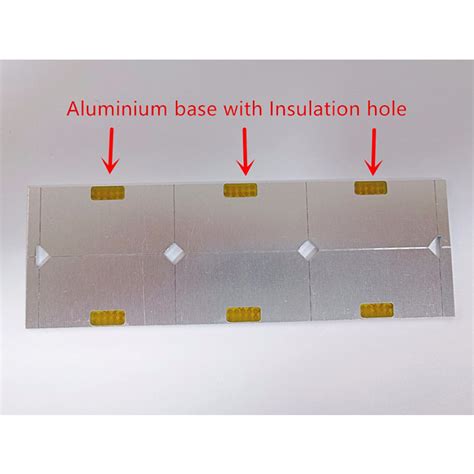
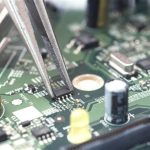
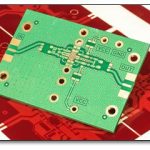
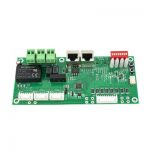
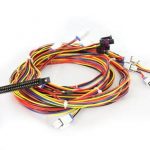
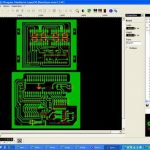
Leave a Reply